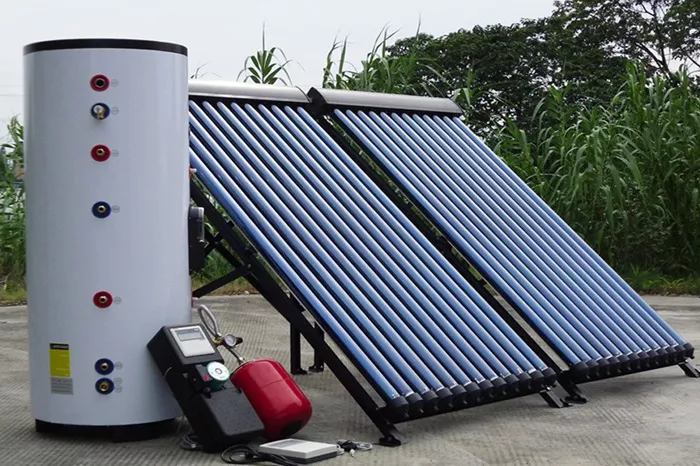Solar-powered heating systems are gaining traction as governments push for a shift from fossil fuels to renewable energy sources, while consumers seek ways to lower utility bills. Similar to residential solar panels, solar heaters are being adopted worldwide, driven by both government initiatives and private investments.
Solar water heating systems consist of a storage tank and a solar collector, categorized into two main types: active and passive. Active systems feature circulating pumps and controls, including direct circulation systems that pump household water directly through collectors and indirect circulation systems that use a heat-transfer fluid. The latter is more efficient in colder climates. In contrast, passive systems, which are generally less expensive but less efficient, can offer greater reliability and longevity. They include integral collector-storage systems, where a tank is heated by sunlight before distribution, and thermosyphon systems that utilize heated water from rooftop collectors.
These solar systems typically require backup solutions for overcast days and periods of high demand, which can include traditional water heaters or rooftop tanks. Maintenance is necessary every three to five years, with certain components needing replacement every two to ten years. Once operational, solar water heaters can significantly decrease energy costs, especially in areas with high solar exposure.
Cyprus leads Europe in solar water heater adoption, with approximately 93.5 percent of households utilizing this technology, allowing the nation to surpass its renewable energy targets for building heating and cooling. Environment Commissioner Charalampos Theopemptou emphasized Cyprus’s achievements in renewable energy, stating, “We’ve met the target easily… because of such extensive utilization of solar water heaters.”
Having embraced solar water heating since the 1960s, Cyprus benefits from over 300 days of sunshine annually, fostering a local manufacturing industry and job creation. Although installation costs have risen, EU grants are available to assist households in adopting this technology.
In the Middle East and North Africa, solar water heaters are also gaining popularity. In Jordan, the government recently launched the second phase of a subsidy program covering 30 percent of installation costs for 5,000 solar systems, following the installation of 3,500 systems in the previous phase. Meanwhile, in Egypt, reliance on butane cylinders has decreased significantly as households invest in solar-powered alternatives. The country’s solar water heater market is projected to exceed $100 million in 2024, bolstered by the UNIDO-backed Solar Heating in Industrial Processes program and growing manufacturing capabilities.
The global market for solar water heaters is expected to grow from $4.26 billion in 2023 to approximately $6.18 billion by 2028, reflecting a compound annual growth rate of 7.4 percent. The Asia-Pacific region is anticipated to lead this growth, driven by technological advancements, government policies favoring renewable energy, and increasing consumer demand for energy-efficient solutions.
Related topic:
What Is Oil Made Out Of Fossil Fuels?

